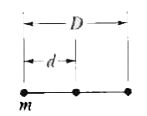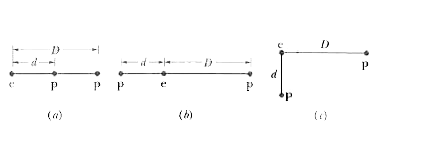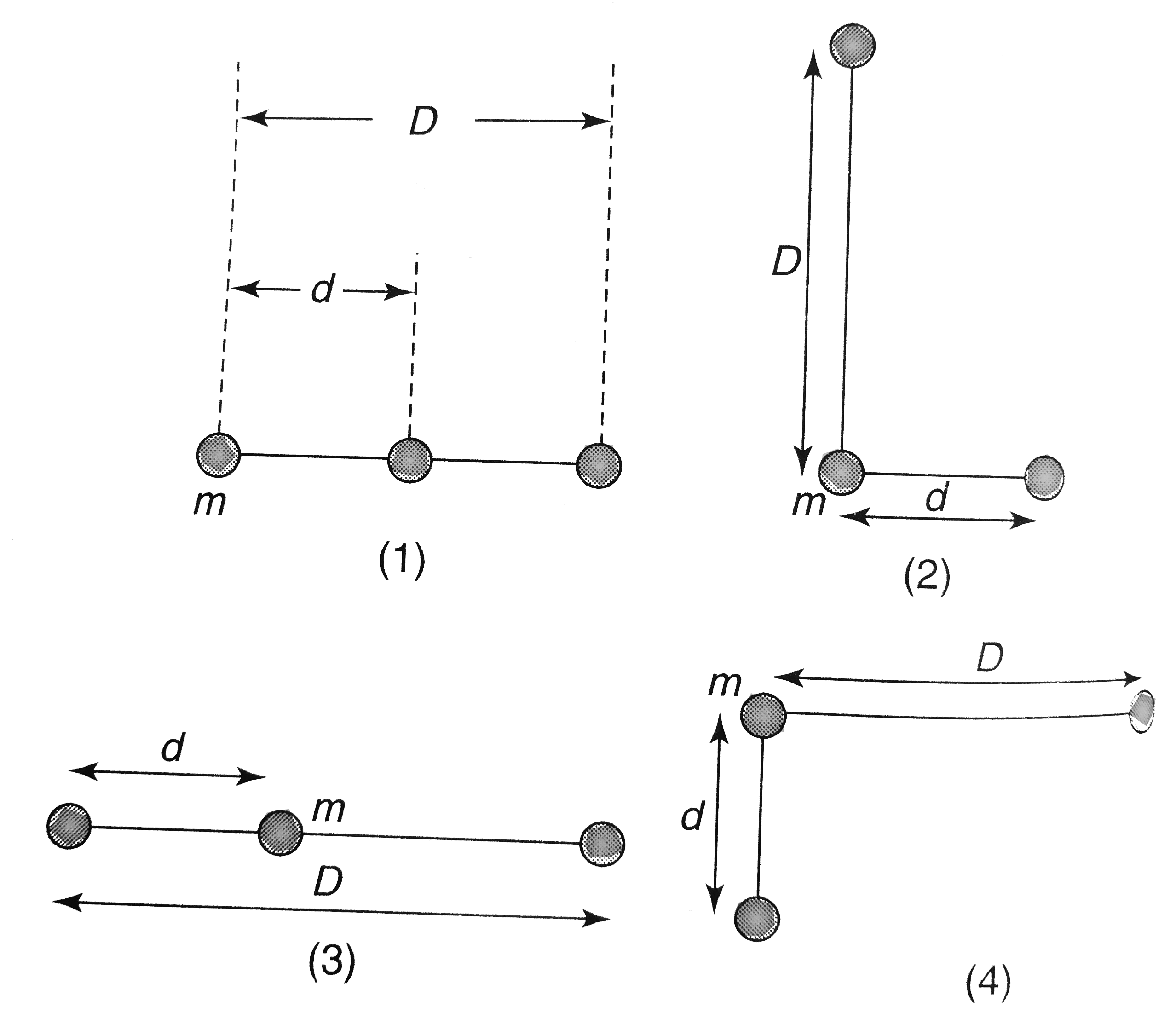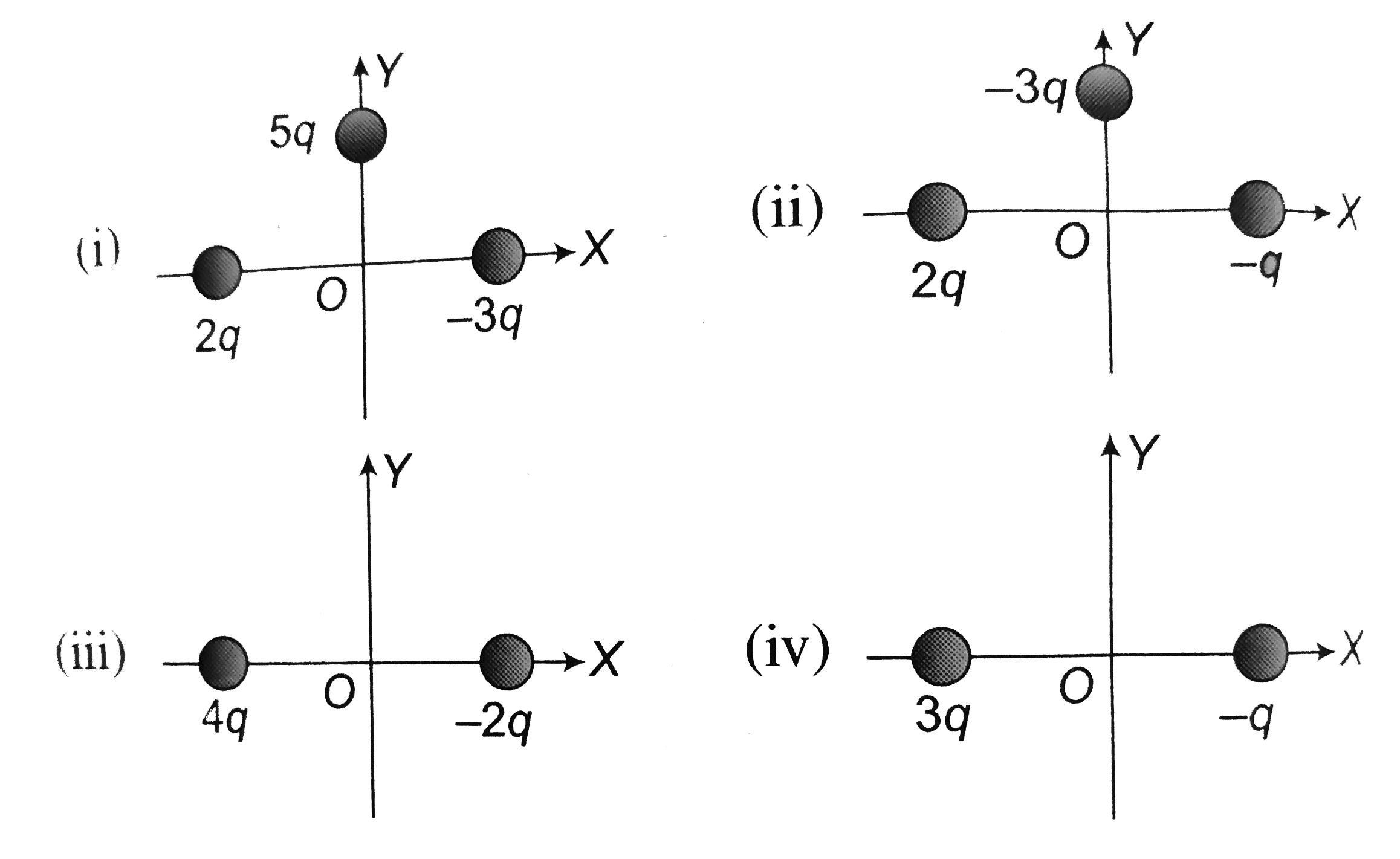The figure shows four arrangements of three particles of equal masses. (a) Rank the arrangements accroding to the magnitude of the net gravitational force on the particlelabeled m, greatest first. (b) In arrangement 2, is the direaction of the net force closer of the line of length d or to theline of length D ?




1, tie of 2 and 4, then 3 , (b) lene of length d
Topper's Solved these Questions
- BOOK - RESNICK AND HALLIDAYCHAPTER - GRAVITATIONEXERCISE - PROBLEMS63videos
GRAVITATION
- BOOK - RESNICK AND HALLIDAYCHAPTER - GRAVITATIONEXERCISE - PRACTICE QUESTIONS (SINGLE CORRECT CHOICE TYPE)16videos
GRAVITATION
- BOOK - RESNICK AND HALLIDAYCHAPTER - GRAVITATIONEXERCISE - PRACTICE QUESTIONS (INTEGER TYPE)4videos
GRAVITATION
- BOOK - RESNICK AND HALLIDAYCHAPTER - GEOMETRICAL OPTICS : REFRACTIONEXERCISE - Practice questions(Integers)4videos
GEOMETRICAL OPTICS : REFRACTION
- BOOK - RESNICK AND HALLIDAYCHAPTER - HEAT-MEASUREMENT AND TRANSFEREXERCISE - PRACTICE QUESTIONS( INTEGER TYPE)5videos
HEAT-MEASUREMENT AND TRANSFER
Similar Questions
The figure here shows three arrangements of an electron e and two protons p. (a) Rank the arrangement according to the magnitude of the net electrostatic force on the electron due to the protons, largest first. (b) In situation c, is the angle between the net force on the electron and the line labelled d less than or more than 45∘ ?
 View Solution
View SolutionFigure shows three arrangements of an electrons e and two protons p(where Dgtd)
(a) Rank the arrangement according to the magnitude of the net electrostatic force on the electron due to the protons placing the largest first.

(b) In situation (c), is the angle between the net force on the electrons and the line labeled horiontal less than or more than 45∘?View Solution
Knowledge Check
- Question 1 - Select One
The figure shows four arrangement of three particles of equal masses. Rank the arrangement according to the magnitude of the net gravitational force on the particle m, greatest first.
 A1, tie of 2 and 4, then 3B1,4,3,2C2,3,4,1D4,3,1,2
A1, tie of 2 and 4, then 3B1,4,3,2C2,3,4,1D4,3,1,2 - Question 2 - Select One
The figure shows four arrangements of three particles of equal masses. (D = 2d)

Select the correct option regarding the magnitude of the net gravitational force on the particle labelled m.A(i)>(iii)=(iv)>(ii)B(i)=(iii)>(ii)>(iv)C(i)>(ii)>(iii)>(iv)D(iv)<(iii)<(ii)=(i) - Question 3 - Select One
Three particles, two with mass m and one with mass M, might be arranged in any of Rank the configuration according of the gravitational force on M, least to greatest.
 A1, 2, 3, 4B2, 1, 3, 4C2, 1, 4, 3D2, 3, 4, 1
A1, 2, 3, 4B2, 1, 3, 4C2, 1, 4, 3D2, 3, 4, 1
Figure shows three arrangements of an electrons e and two protons p(where Dgtd)
(a) Rank the arrangement according to the magnitude of the net electrostatic force on the electron due to the protons placing the largest first.

(b) In situation (c), is the angle between the net force on the electrons and the line labeled horiontal less than or more than 45∘?View SolutionThree particles, two with mass m and one with mass M, might be arranged in any of Rank the configuration according of the gravitational force on M, least to greatest.
 View Solution
View SolutionIn the following four situations charged particles are equal distance from the origin. Arrange them the magnitude of the net electric field at origin greatest first
 View Solution
View SolutionA cube of 1 m length is under the pressures given in the figure. Find the magnitude and the direction of the net force on it.
 View Solution
View SolutionIn the following four situations charged particles are equal distance from the origin. Arrange them the magnitude of the net electric field at origin greatest first
 View Solution
View Solution

